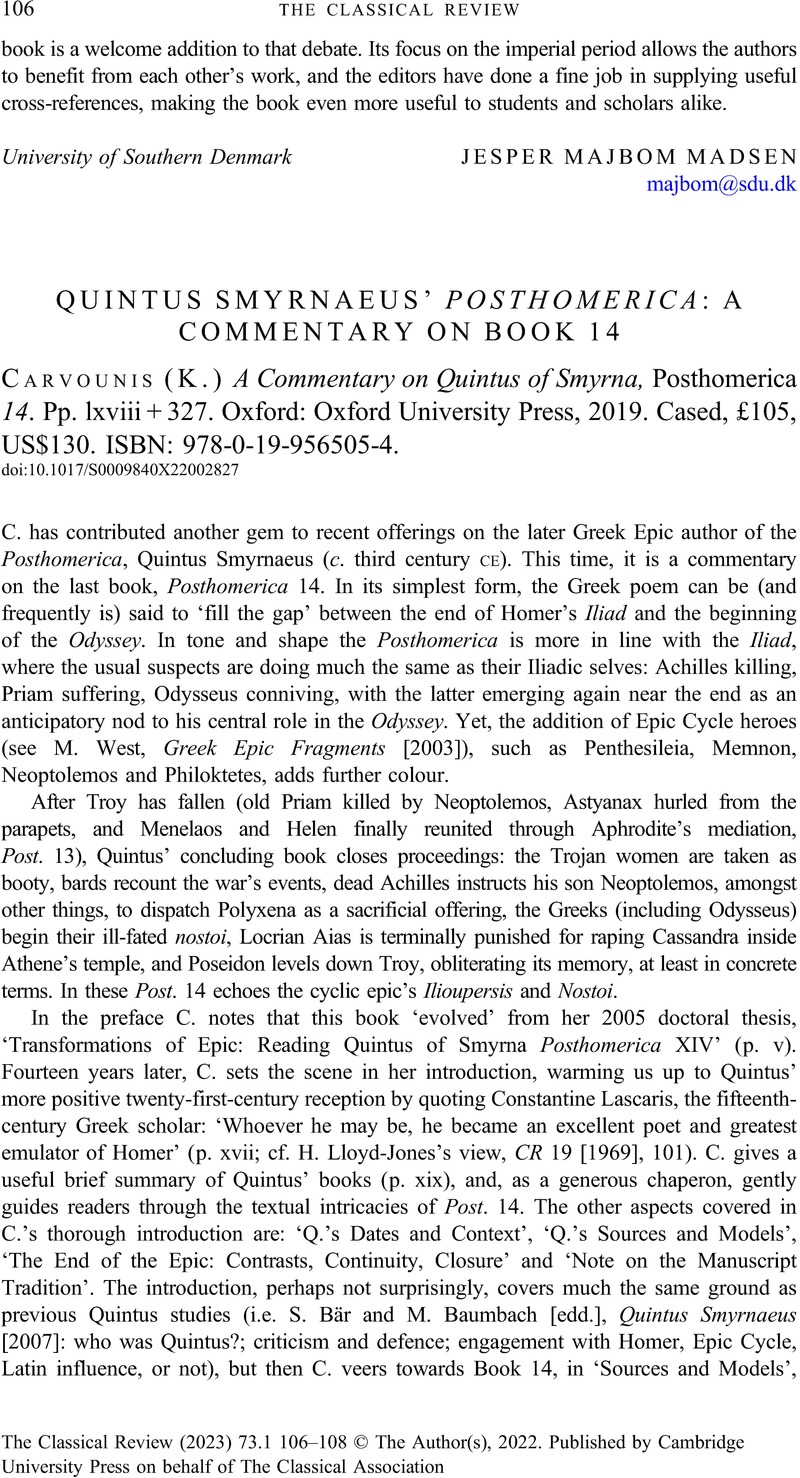No CrossRef data available.
Published online by Cambridge University Press: 22 December 2022

1 (Belated) thanks to my son, Isaac W.H. Boyten, for proofing both this and my last review (‘Sandwiched Between Two Worlds’, CR 73 [2023], doi 10.1017/S0009840X22001986).